The Most Effective Fire Extinguishers for Class B and Class C Fires
August 15, 2023
Many fire extinguishers are on the market, but not all are effective in Class B and Class C fires. This blog post will discuss the most effective fire extinguishers for both types of fires. We will also provide tips on using these extinguishers properly to maximize their effectiveness.
Different Types of Fires
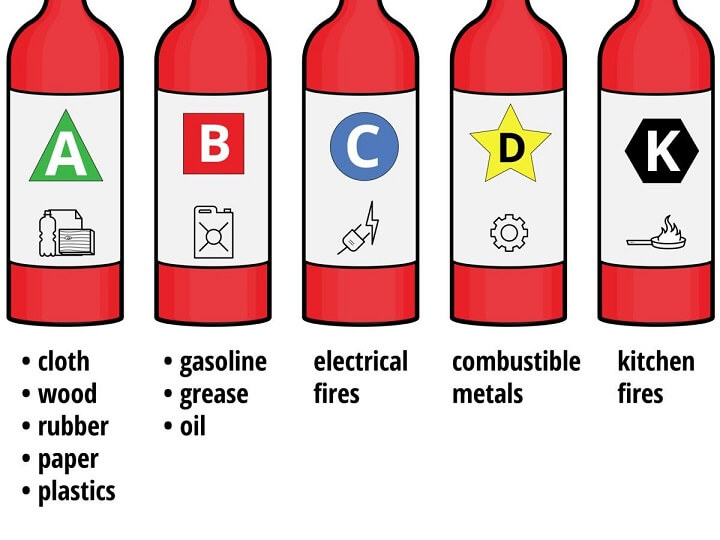
First, learn about the different types of fires, each with its dangers and risks.
- Class A fires involve combustible materials such as wood or paper.
- Class B fires involve flammable liquids, such as gasoline or oil.
- Class C fires involve electrical equipment.
- Class D fires involve metals.
- Class K fires involve cooking oils or fats.
Types of Fire Extinguishers
Many fire extinguishers are designed for a specific type of fire. The most common extinguishers are water, foam, dry chemical, and carbon dioxide.
Water Extinguishers
It is the most common fire extinguisher and can be used on Class A fires fueled by wood, paper, or textile materials.
Foam extinguishers
It is used on Class B fires, which are fueled by liquids.
Dry chemical extinguishers
It can be used on Class A, B, and C fires fueled by electricity.
Carbon dioxide extinguishers
It can be used on Class B and C fires.
When choosing your fire extinguishers, selecting one appropriate for the type of fire you may encounter is essential.
Extinguishing Agents
There are many different types of extinguishing agents, each with advantages and disadvantages. Water is the most common type of extinguisher, but it is not always the best choice. Other options include foam, dry chemicals, carbon dioxide, and Halon.
Water extinguishing agent
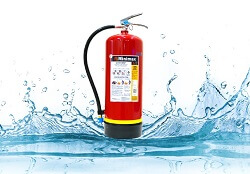
It works by cooling the fire and preventing it from spreading. But they are not effective in all types of fires. For example, water extinguishers will not put out fires caused by flammable liquids or electrical equipment.
Foam extinguishing agent
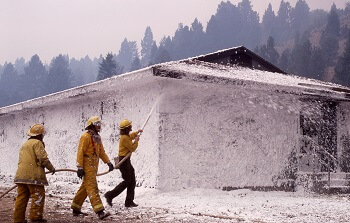
It works by smothering the fire and preventing it from getting oxygen. They are effective on most types of fires, including flammable liquid fires. But foam extinguishers can be heavy and difficult to use.
Dry chemical extinguishing agent

It works by interrupting the chemical reaction that causes the fire. They are effective on most types of fires, including those caused by flammable liquids. But dry chemical extinguishers can be messy and difficult to clean up.
Carbon dioxide extinguishing agent

It works by displacing the oxygen that fuels the fire. They are effective on most types of fires, including those caused by flammable liquids. But carbon dioxide extinguishers can be expensive and difficult to use.
Halon extinguishing agent
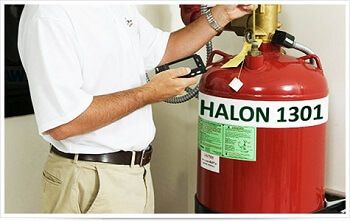
It works by interrupting the chemical reaction that causes the fire. They are effective on most types of fires, including those caused by flammable liquids. But Halon extinguishers can be expensive and difficult to use.
The best extinguisher to use depends on the fire you are dealing with. Make sure you know what fire you are dealing with before choosing an extinguisher. And always read the instructions carefully before using an extinguisher.
Fire Extinguisher Ratings and its Differences
Fire extinguishers are designed to fight a specific type of fire.
The most common extinguishers are ABC extinguishers, which are effective against A (wood and paper), B (liquid and grease), and C (electrical) fires. Class D extinguishers are for fighting metal fires, while Class K extinguishers are for fighting kitchen fires.
When selecting your fire extinguishers, it is essential to read the label carefully. The title will tell you the classification of the extinguisher and what type of fire it is designed to fight. It is also essential to check the expiration date on the label. Fire Extinguishers that are more than 12 years old should be replaced.
What’s the most effective fire extinguisher on a class b fire and a class c fire?
Different Types of Fires
There are different extinguishers for different types of fires. Class B fires are best extinguished with a CO₂ fire extinguisher, while Class C fires require an ABC dry chemical fire extinguisher.
Check the label to ensure it is the right fire extinguisher for the type of fire you are trying.
Different Capabilities
Different fire extinguishers also have other capabilities. For example, a CO₂ extinguisher is only effective at short range, while an ABC dry chemical fire extinguisher can be used at long range.
Using the wrong extinguisher on a fire can be dangerous. If you are unsure which type of fire extinguishers to use, always err on the side of caution and contact the fire department. They will be able to assist you in putting out the fire safely.
Additional Tips in Choosing the Right Fire Extinguishers
Remember a few more when selecting fire extinguishers for your home or business. The size and type of fire extinguisher you need depends on the combustible materials in the area where it will be used.
Other Types of Fire Extinguishers
Wet chemical extinguishers are a type of extinguisher that uses aqueous-based or water-based solutions to extinguish fires.
The solution in the extinguisher breaks the chemical reaction of the fire and cools the burning surface, making it difficult for the fire to reignite.
Wet chemical extinguishers are most effective on Class A and Class F fires but can also be used on Class B and Class C fires.
For example, Class A fires involve ordinary combustibles such as paper, wood, cloth, and rubber. The best extinguisher for Class A fires is water or a foam-based extinguisher. Class B is the fires involving flammable liquids such as gasoline, oils, paint thinners, and propane. The best type of fire extinguisher for Class B fires is a CO_ based extinguisher.
Class C fires involve electrical equipment, such as appliances, wiring, and circuit breakers. The best type of fire extinguisher for Class C fires is a CO_ based extinguisher.
Class D fires involve combustible metals, such as aluminum, magnesium, and titanium. The best type of fire extinguisher for Class D fires is a powder-based extinguisher.
Class K fires involve cooking oils and fats. The best type of fire extinguisher for Class K fires is a foam-based extinguisher.
When selecting a fire extinguisher, you should also consider the environment in which it will be used. For example, if the fire extinguisher will be used in a kitchen, it should be designed for use with cooking oils and fats.
Size of Fire Extinguishers
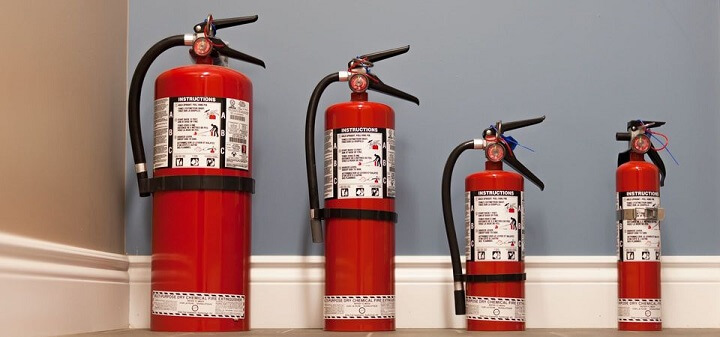
You should also consider the size of the fire extinguisher. Smaller fire extinguishers are easier to handle and can be stored in small spaces but may not be able to extinguish a large fire.
Larger fire extinguishers are more challenging to operate and may require two people, but they will have a more remarkable ability to extinguish a fire.
Finally, it would help if you considered the price of the fire extinguisher. Fire extinguishers can range in price from $20 to $200. The size and type of fire extinguisher you need will determine your worth.
When selecting a fire extinguisher, you should keep these factors in mind to ensure you choose the suitable extinguisher for your needs.
Conclusion
The most effective fire extinguisher on a Class B fire is a dry chemical extinguisher. This type of extinguisher will quickly extinguish the fire and prevent it from reigniting. A Class C fire requires a different kind of extinguisher, such as a foam or CO₂ extinguisher. These types of extinguishers will smother the fire and prevent it from spreading.
Always remember to read the label on the extinguisher before using it. This will ensure that you are using the correct type of extinguisher for the fire you are trying to put out.
When choosing a fire extinguisher, always consider the size of the fire you’re trying to put out. A small fire can be quickly extinguished with a handheld extinguisher, while a more significant fire may require a wheeled unit.
Be sure to select an extinguisher rated for the type of fire you’re dealing with.
Class A fires are the most common and are caused by combustible materials such as wood, paper, or cloth. Class B fires involve flammable liquids, such as gasoline or oil. Class C fire is electrical and can be caused by faulty wiring or appliances.
The most important thing to remember when using a fire extinguisher is to aim the nozzle at the base of the fire. This will allow the extinguishing agent to reach the fuel source and quickly put out the fire.
Be sure to stand back safely while using the extinguisher, as the chemicals can be harmful if inhaled.
If you find yourself in a situation where you need to use a fire extinguisher, always remember to stay calm and act quickly.
Choose the correct type of extinguisher for the job, aim the nozzle at the base of the fire, and stand back a safe distance while you discharge the contents.
With some preparation, you can quickly put out a fire before it has a chance to spread.
